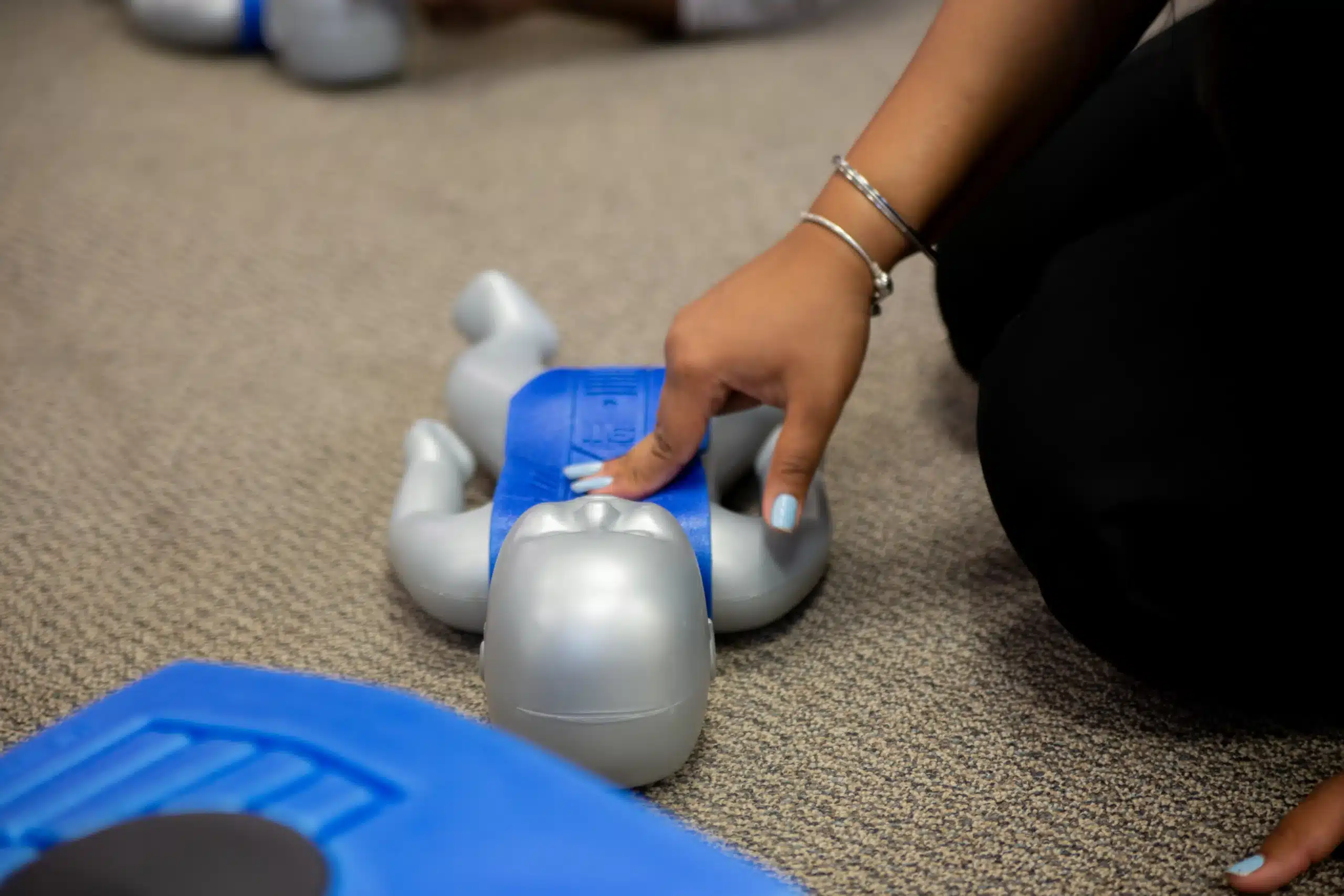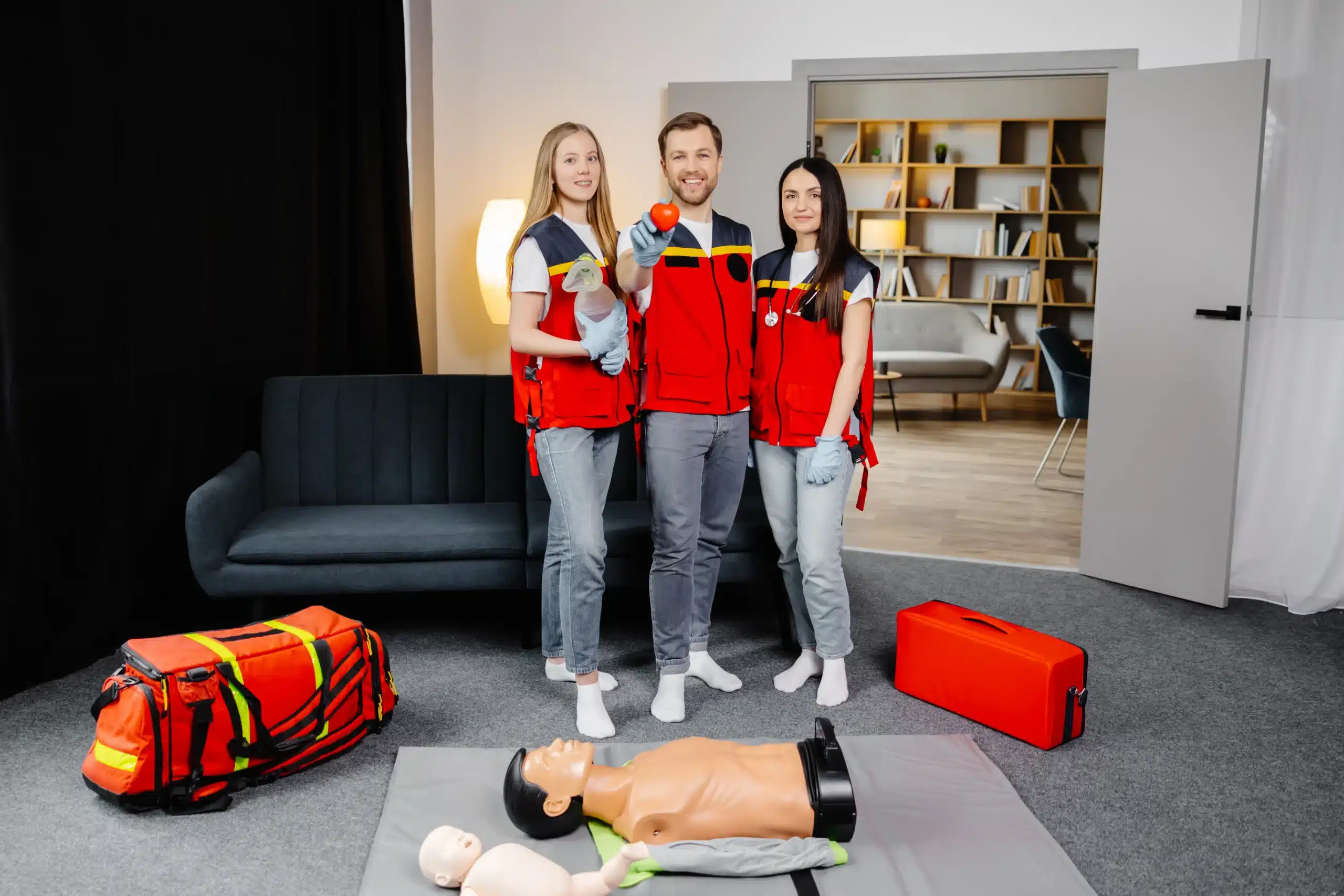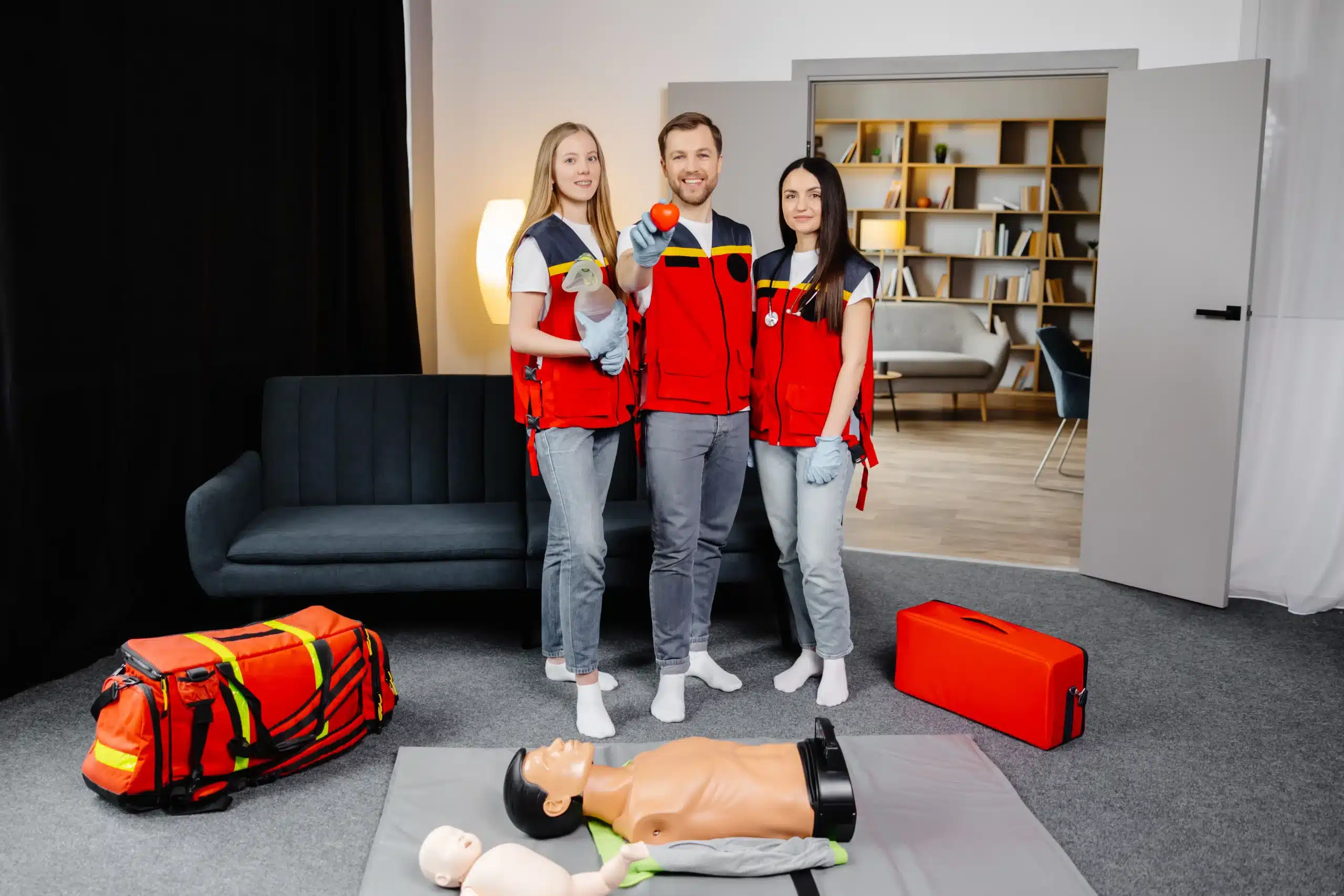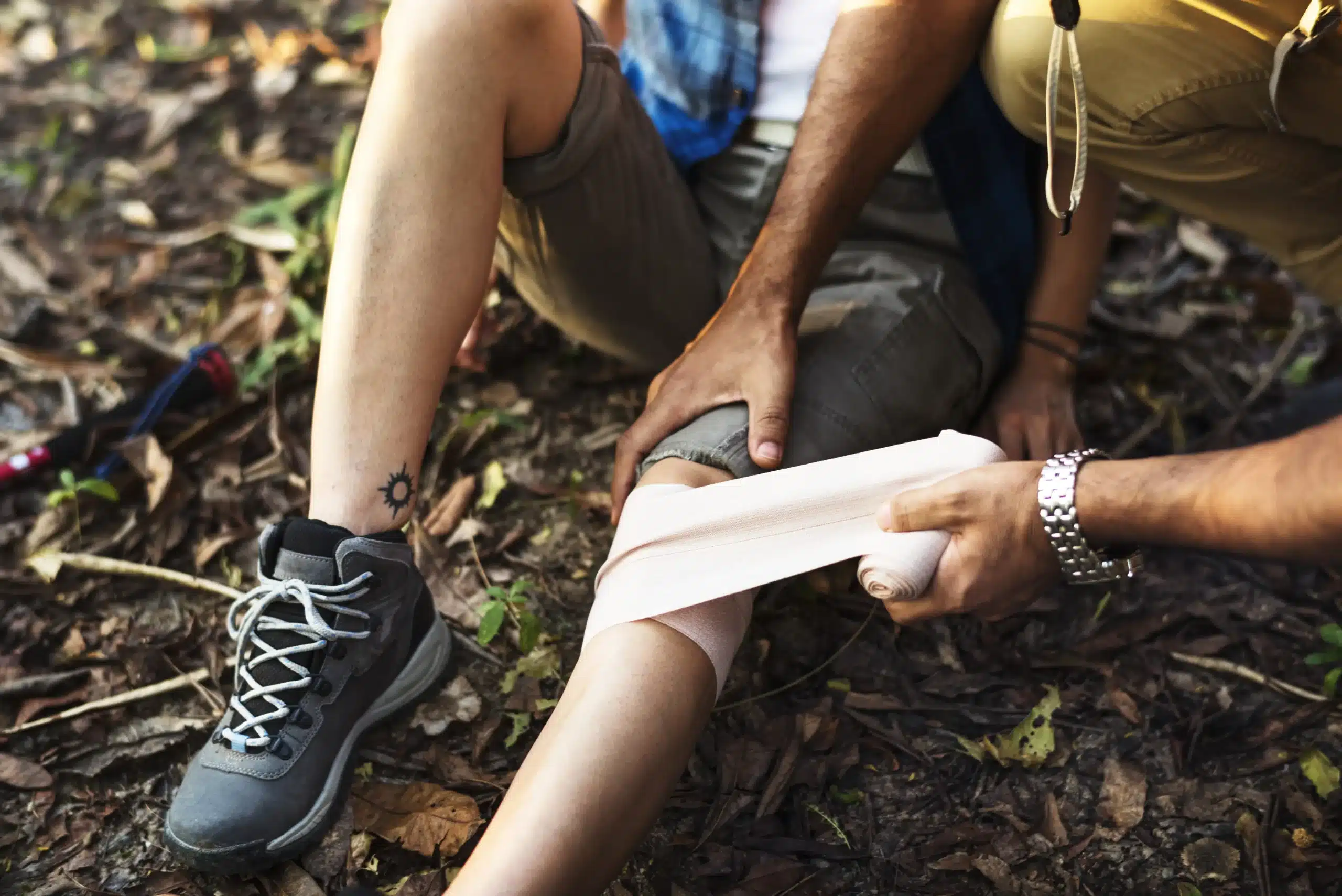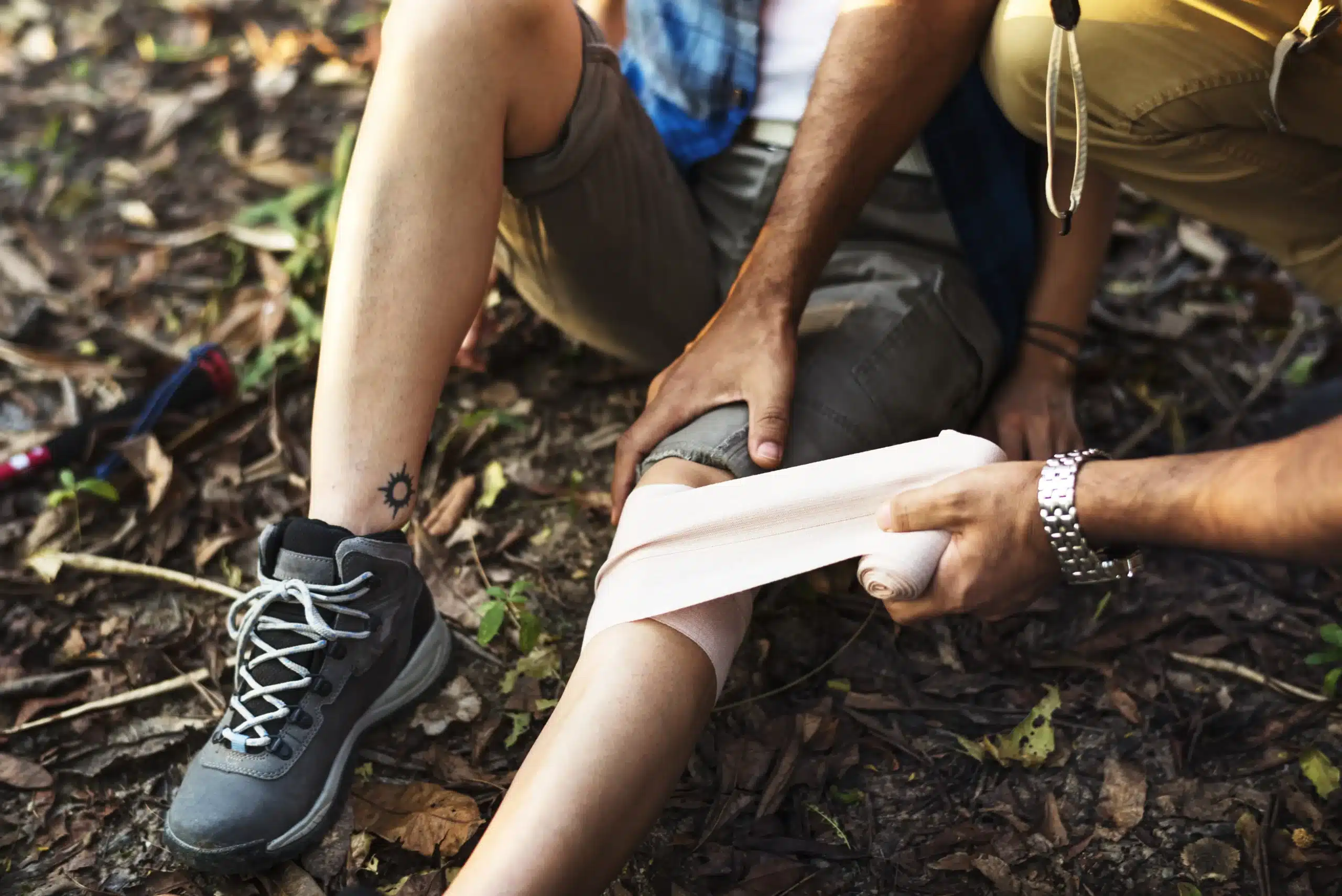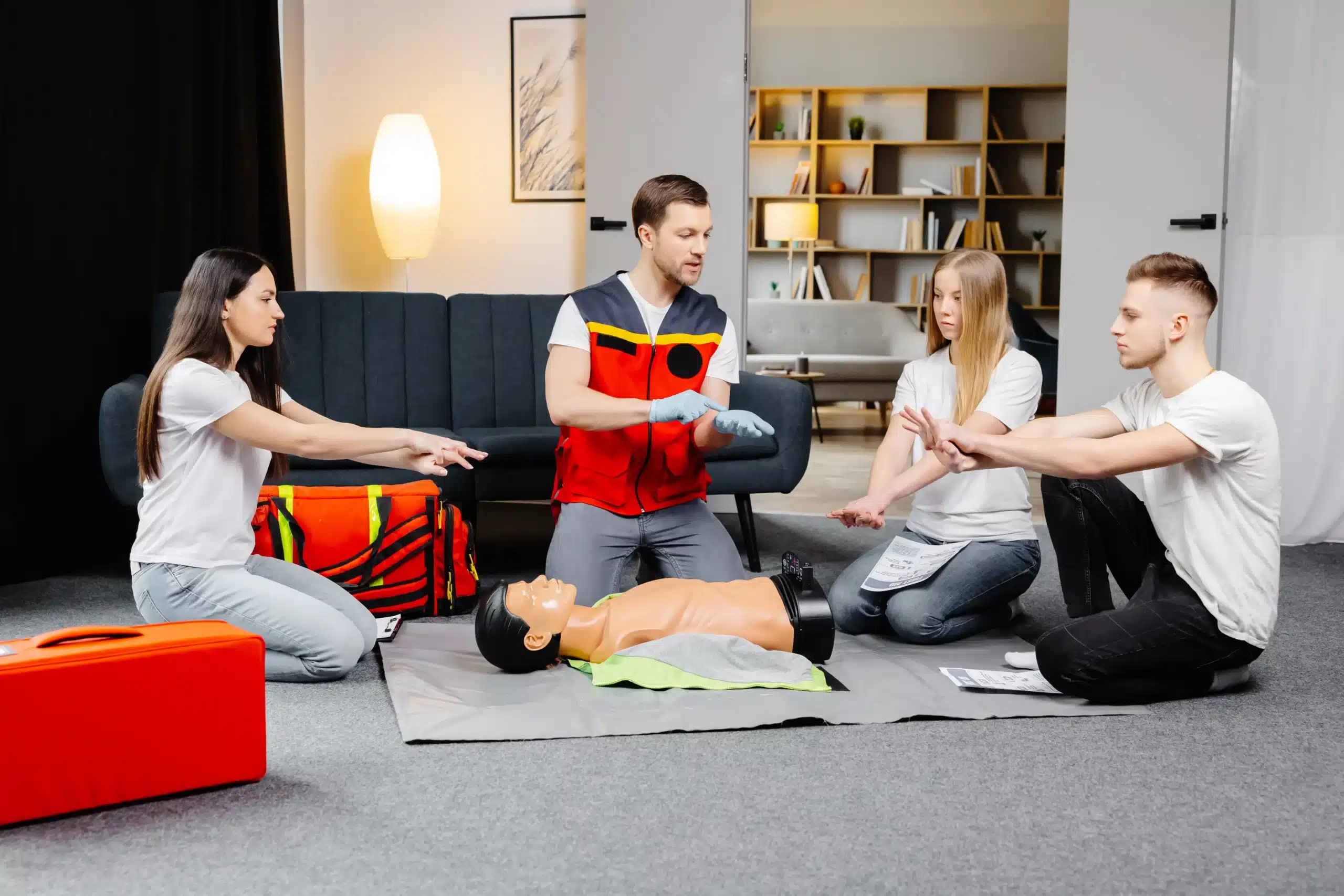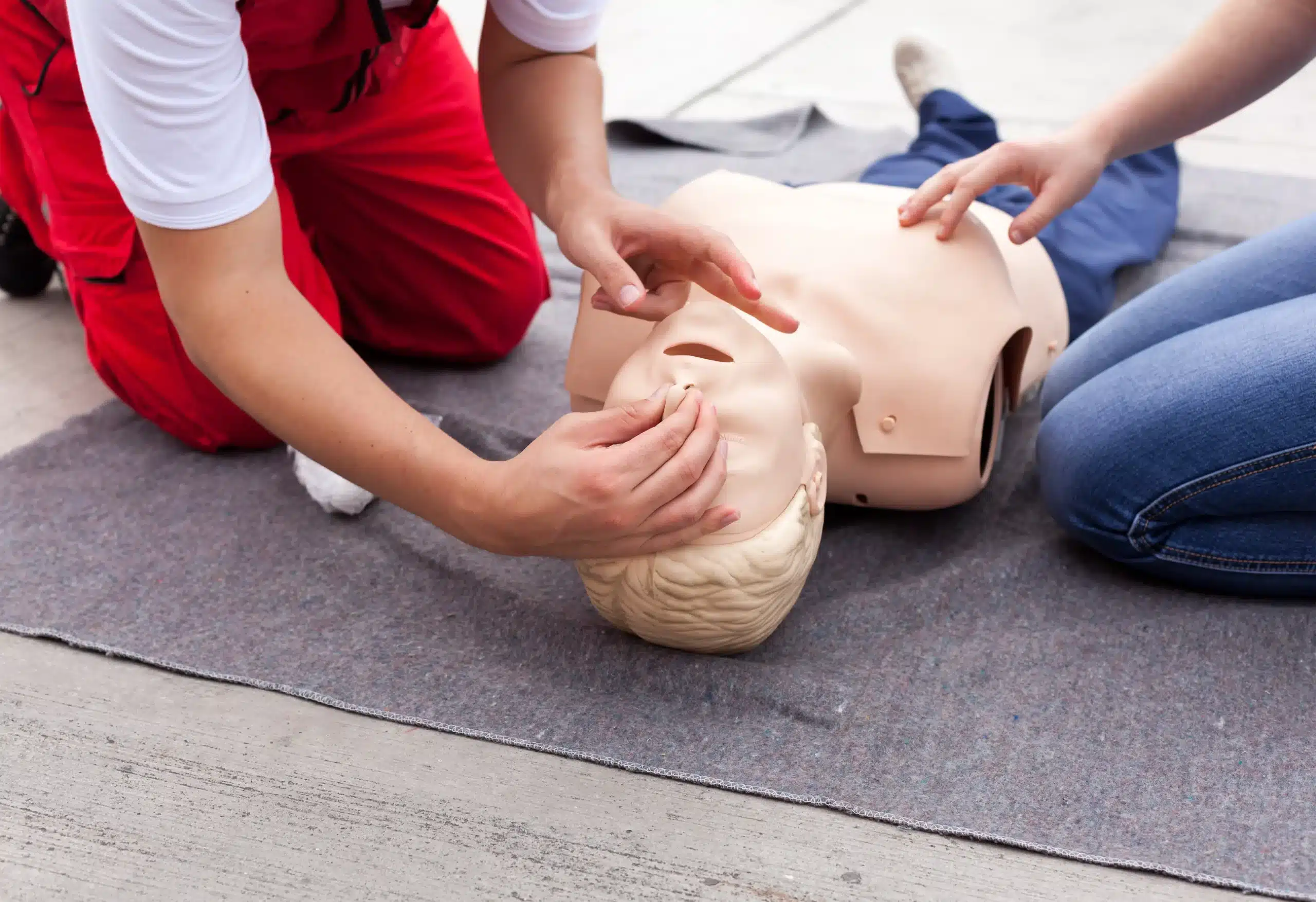Basic Life Support (BLS) training is more than just a good idea—it’s a powerful skill set that can save lives. It’s about being prepared, knowing how to respond effectively in a crisis, and having the confidence to act when every second counts. Whether you work in healthcare, childcare, or simply want to be equipped for emergencies, BLS certification is a valuable asset. If you’re searching for “bls training near me,” this post will provide a comprehensive overview of BLS training, including what it covers, who needs it, and how to find the right program for your needs.
Key Takeaways
- BLS training empowers you to save lives: From healthcare settings to everyday situations, BLS skills provide the confidence to act quickly during emergencies. Find a program that offers hands-on practice and feedback.
- Choosing the right program matters: Look for AHA-accredited training centers with experienced instructors, flexible schedules, and comprehensive resources. This ensures you receive high-quality instruction and learn current techniques.
- Stay current with regular renewals: BLS certification is valid for two years. Renewing your certification keeps your skills sharp and ensures you’re up-to-date on the latest guidelines.
What is BLS Training & Why Do You Need It?
Basic Life Support (BLS) training teaches you how to respond to life-threatening emergencies. It’s more than just CPR—BLS classes cover a range of techniques to help adults, children, and infants in crisis. These skills can make a real difference, giving you the confidence to act quickly and effectively when every second counts. BLS certification is a valuable asset, whether you’re a healthcare professional or want to be prepared for anything.
BLS Skills
A BLS course provides comprehensive training in core life-saving skills. You’ll learn adult, child, and infant CPR, plus how to use an automated external defibrillator (AED). The curriculum also covers relieving choking, rescue breathing, and recognizing the signs of a heart attack or stroke. Beyond the technical skills, BLS training emphasizes teamwork, clear communication, and critical thinking under pressure. These skills are practiced through realistic scenarios and simulations, providing hands-on experience in a safe learning environment. For a detailed overview of BLS skills, the American Red Cross offers helpful resources.
Who Needs BLS & Why?
While BLS certification is often required for healthcare providers and first responders, it’s a valuable skill set for anyone. Community volunteers, teachers, coaches, parents, and caregivers can all benefit from BLS training. Knowing how to respond to a medical emergency empowers you to help family, friends, coworkers, or even strangers. BLS training equips you to provide immediate care until professional medical help arrives, potentially saving a life.
Debunking BLS Myths
One common misconception is that BLS training is overly complex or only for medical professionals. BLS courses are designed to be accessible to everyone, regardless of background. Another myth is that online-only BLS certification is sufficient. The American Heart Association (AHA) requires an in-person skills assessment for certification. Online learning can be helpful, but it’s crucial to find a program with hands-on practice and evaluation. For reliable, affordable BLS training in Napa that meets AHA guidelines, consider Safety Training Seminars.
Find BLS Training Near You
Finding the right BLS training program is easier than you think. Several reputable organizations and institutions offer courses, so you can find one that fits your schedule, budget, and learning style. Here are a few places to start your search:
Safety Training Seminars: Your Napa Valley CPR Experts
If you’re in Napa, American Canyon, or Vallejo, Safety Training Seminars offers convenient and affordable BLS certification courses seven days a week. As a woman-owned American Heart Association Training Center, they provide high-quality instruction and flexible scheduling. They also offer other essential courses like ACLS, PALS, and First Aid, making them a one-stop shop for all your safety training needs.
American Heart Association
The American Heart Association (AHA) is a leading authority on CPR and emergency cardiovascular care. They have a network of Training Centers across the country, ensuring you can find a certified instructor near you. Many hospitals and medical centers also offer AHA-certified BLS courses. The AHA website has a search tool to locate a Training Center or course in your area.
American Red Cross
The American Red Cross is another well-respected provider of BLS training. They offer various course formats, including in-person classes and blended learning options that combine online coursework with in-person skills sessions. This flexibility allows you to choose the learning method that best suits your needs. Visit their website to find BLS courses near you.
Hospitals & Medical Centers
Many hospitals and medical centers offer BLS training to their staff and the community. These courses are often taught by experienced healthcare professionals and may provide access to advanced training equipment. Contact your local hospitals or check their websites for information on upcoming BLS courses. These institutions play a vital role in improving bystander CPR rates and building stronger community health responses.
Community Colleges
Community colleges frequently offer affordable BLS training programs through their continuing education departments or healthcare career pathways. These courses are often open to the public and can be a great option for convenient and cost-effective training. Check with your local community college to see if they offer BLS certification. Community colleges are often valuable partners in community-wide CPR initiatives.
BLS Training: Formats & Costs
In-Person, Online, or Both?
BLS training comes in several formats, so you can choose what works for your schedule and learning style. Many organizations, like the American Red Cross, offer both in-person and blended learning BLS certification courses that combine online learning with in-person skills sessions. This hybrid approach lets you study the material at your own pace and then demonstrate your skills in a hands-on environment. While some programs may offer online-only options for renewal courses, the American Heart Association (AHA) requires an in-person skills assessment for all BLS certifications. So, if you’re aiming for AHA certification, be prepared to attend a skills check in person.
How Much Does BLS Training Cost?
The price of BLS training varies depending on the training provider, location, and course format. You can find CPR classes for around $65, while combined CPR and First Aid training might cost closer to $85. Some providers, like ACLS Medical Training, offer different pricing for initial certification and recertification, with recertification often being less expensive. It’s always a good idea to compare prices from different providers in your area to find the best value. Remember to factor in any additional costs, such as study materials or travel expenses.
Discounts & Group Rates
If you’re training with a group or your workplace needs BLS certification for multiple employees, look into discounts and group rates. Many providers offer reduced pricing for group bookings, making it more cost-effective to train as a team. Safety Training Seminars, for example, offers on-site training, which can be a convenient and affordable option for businesses in Napa, CA. Learning together can also create a supportive environment and boost everyone’s confidence. Plus, group training can be a great way to build camaraderie and improve CPR response rates within a community, as highlighted in research on community-based CPR initiatives.
Your BLS Training Experience
Now that you know why BLS training is so important, let’s talk about what you can expect when you sign up for a class. Understanding the process—from the classroom experience to certification—can help you feel prepared and confident.
What Happens in Class?
BLS classes cover the core skills you’ll need to respond to cardiac and breathing emergencies. You’ll learn adult, child, and infant CPR, along with techniques for relieving choking. The curriculum also includes training on using an AED (automated external defibrillator). Beyond these hands-on skills, the course emphasizes the importance of scene safety, critical thinking under pressure, teamwork, and the legal aspects of providing aid. At Safety Training Seminars, we prioritize creating a supportive learning environment where you can ask questions and practice your skills with confidence. Check out our BLS course page for more details on what we offer.
Practice, Assessment, & Certification
BLS courses typically run between two and a half to four and a half hours, depending on the program and the experience level of the participants. If you’re already familiar with some of the material, you might consider the “Challenge” option, which allows you to study independently and then demonstrate your knowledge through a written exam and skills assessment. Keep in mind that the American Heart Association (AHA) requires both an online learning component and an in-person skills assessment for their BLS certification, so there’s no fully online option for AHA certification. For healthcare professionals looking to maintain their skills, our RQI program offers a flexible approach.
How Long is Your Certification Good For?
Your BLS certification will be valid for two years. This is the standard timeframe for most organizations, including the AHA and the American Red Cross. Renewing your certification every two years ensures your skills stay fresh and you remain up-to-date on any changes in CPR guidelines. We offer renewal courses at Safety Training Seminars to make this process easy and convenient. Visit our website to explore our course calendar and find a renewal class that fits your schedule.
Choosing the Right BLS Program
So you’ve decided to get BLS certified—great! Now, how do you pick the right program? Here’s what to look for:
Accreditation & Instructors
First, confirm the training center’s accreditation. Safety Training Seminars, for example, is a woman-owned AHA Training Center offering high-quality American Heart Association courses right here in Napa. AHA accreditation means the training adheres to the latest guidelines and standards, ensuring you learn the most current life-saving techniques. Also, check the instructors’ credentials. Experienced, certified instructors create a more effective learning environment.
Scheduling & Convenience
Juggling work, family, and other commitments? Look for a program that offers flexible scheduling. Safety Training Seminars offers BLS certification courses seven days a week to fit busy schedules. Think about location, too. Is the training center easy to reach? Do they offer online or hybrid learning options?
Course Materials & Resources
High-quality course materials are essential for effective learning. A good BLS program provides comprehensive resources, including manuals, videos, and practice equipment. Thorough training materials build confidence and prepare you to respond effectively in real-life emergencies.
Community Impact & Reviews
Finally, consider the training center’s community impact and check out reviews from past participants. Positive reviews and a strong community presence often signal a reputable program. Effective BLS training benefits individuals and improves community health outcomes. Community CPR initiatives often rely on collaboration and shared resources. Choosing a program that actively engages with the community can enrich your learning experience and contribute to a larger cause.
Related Articles
- BLS for Healthcare Providers in American Canyon – Napa CPR Classes
- BLS Classes in Vallejo: The Complete Guide – Napa CPR Classes
- BLS Training in Vallejo: Your Go-To Guide – Napa CPR Classes
- CPR Myths: Debunked 10 Facts Everyone Should Know
- BLS Courses in Napa: Find the Right Fit For You – Napa CPR Classes
Frequently Asked Questions
Is BLS certification the same as CPR certification?
BLS certification is more comprehensive than basic CPR certification. It includes CPR but also covers other essential life-saving techniques like using an AED, relieving choking, and recognizing the signs of a stroke or heart attack. BLS also emphasizes teamwork and communication, especially important for healthcare professionals.
How long does it take to get BLS certified?
BLS courses typically range from two and a half to four and a half hours. The length can vary based on the specific program and whether you choose a standard or challenge course (for those already familiar with some of the material).
How do I find a BLS class near me?
Several organizations offer BLS classes, including the American Heart Association, the American Red Cross, hospitals, medical centers, and community colleges. You can usually find class schedules and locations on their websites. If you’re in the Napa area, Safety Training Seminars offers convenient and affordable options.
How much does BLS certification cost?
The cost of BLS training varies depending on the provider, location, and course format. Expect to pay somewhere between $65 and $85. Many providers offer discounts for group bookings or workplace training. It’s always wise to compare prices from different providers to find the best value.
How often do I need to renew my BLS certification?
BLS certification is typically valid for two years. Renewing your certification ensures your skills are current and aligned with the latest guidelines. Most training centers offer renewal courses.
